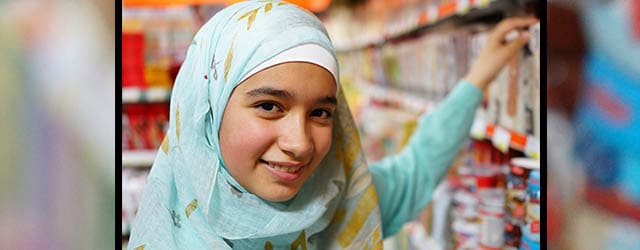The region’s largest retailers continue to expand, as do multinational companies, in this growing markets.

Back To Supplement
All the leading multinational fast-moving consumer goods (FMCG) companies are present in the Middle East. And they all have different strategies for running their businesses in the region—some have their own offices and production plants; others have offices and outsource production to private-label contract manufacturers in the region; some have distribution and retail centers only; others prefer a mixture of different strategies for different product lines.
Such decisions are driven in part by regulatory requirements and restrictions but also by the fact that the region is very diverse. So working with local distributers, who know how to market to local tastes, is often advantageous.
Henkel, Unilever, and Procter & Gamble are all introducing new products targeting the Middle East market. Henkel of Germany, for example, has Gliss Restore & Refresh shampoo, which is touted as the world’s first hair product that can solve hair care problems caused by lack of ventilation under a headscarf. And Unilever has tweaked fragrances and packaging to appeal to local tastes.
Foreign and local FMCG firms share a desire to tap into such a dynamic retail region, which boasts a growing and young population, strong GDP growth and increasing consumer spending.
The retail industry in Gulf Cooperation Council countries is, according to Alpen Capital, expected to grow at more than a 7% rate between 2013 and 2018 to reach over $280 billion in market capitalization. Saudi Arabia holds the largest share in the region’s retail industry—estimated at 46.4% of the region’s total sales in 2013—and the country’s share of retail sales is likely to increase to 47.1% in 2018. Euromonitor International analysts predict that Saudi Arabia’s beauty and personal care market will rise to roughly $7.5 billion in 2018, up from $4.1 billion last year, so the growth potential is enticing. The Middle Eastern personal care market is the second-fastest-growing beauty and personal care products market in the world and has been for the past six years.
CUSTOMERS DEMAND MORE
Rapid urbanization (in the UAE, more than 65% of the population lives in Abu Dhabi and Dubai) is also influencing the market. Indeed, consumers in the region are demanding more experience-rich retail shopping trips.
Jon Wright, Europe, Middle East & Africa region manager at international food and grocery research company IGD, says that new selling space will continue to be added during 2015, with large-scale expansion plans announced by LuLu, Majid Al Futtaim, Casino and others. “Hypermarkets will remain the core format for many, enabling retailers to anchor new shopping malls, the space to sell across a wide range of categories and the opportunity to create destination areas that drive footfall.”
Youssef Al-Qafari, CEO of Saudi retailer Al Othaim Markets, says large international retailers are expanding and increasing their presence in the region to compensate for the slow (and sometimes negative) growth in major retail markets in the US and Europe. “We believe that in the GCC and, more specifically, in Saudi Arabia, the retail market is still severely underserved, and lots of opportunity stands out.”
IGD’s Wright says the continued expansion of the region’s largest retailers, especially within emerging sectors such as convenience and pharmacy, is putting independent and smaller chains under renewed pressure. “The issue is being accentuated by local governments, in specific markets, favoring larger operators as part of modernization programs,” he says.
In addition, there is the potential for a slower pace of overall economic growth in the region in 2015. Wright adds: “As the shine comes off the region’s mega-malls, with shoppers increasingly favoring smaller neighborhood-based ‘community malls’ and spending in convenience stores grows, smaller chains are likely to be increasingly squeezed out by larger rivals.”



